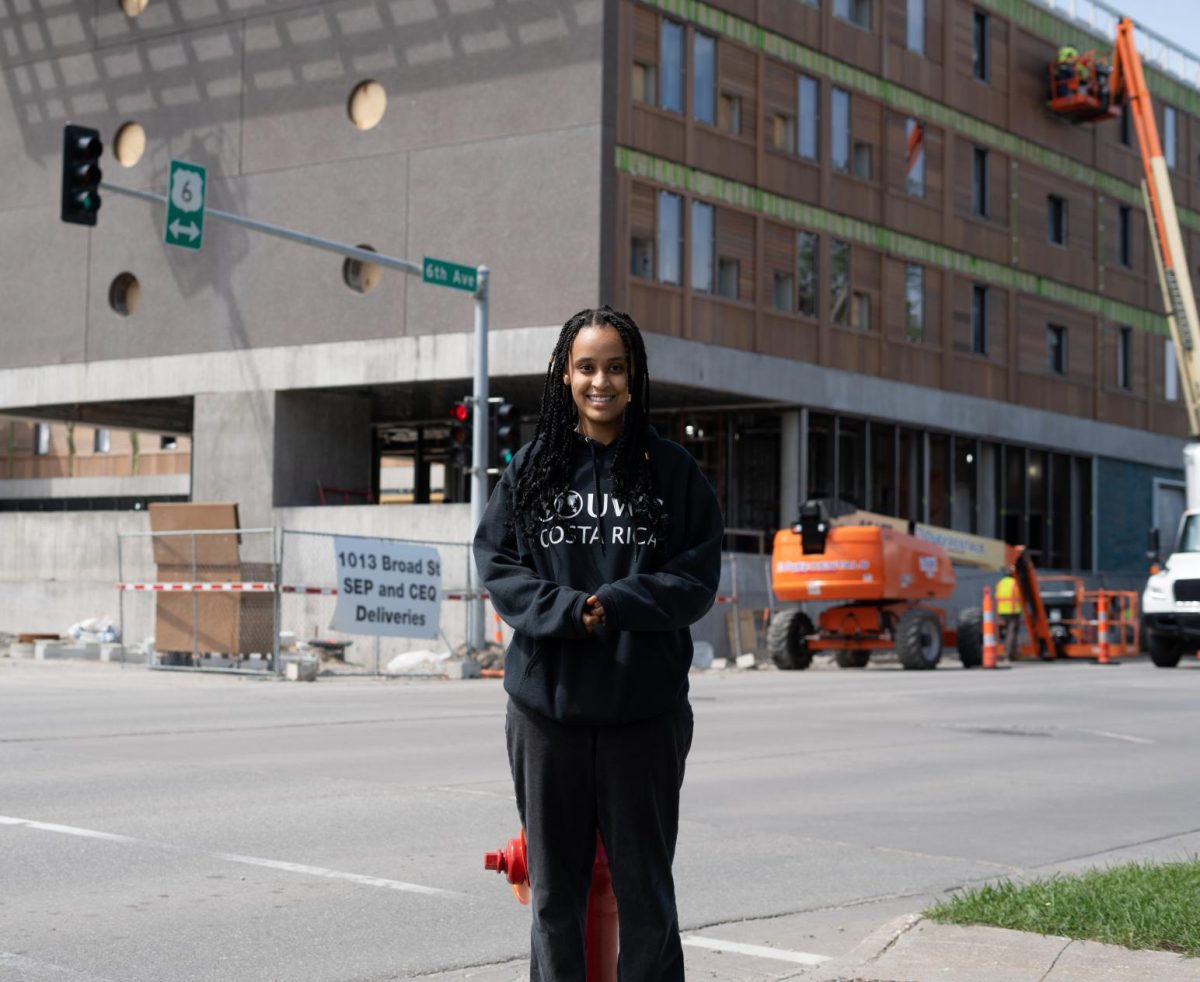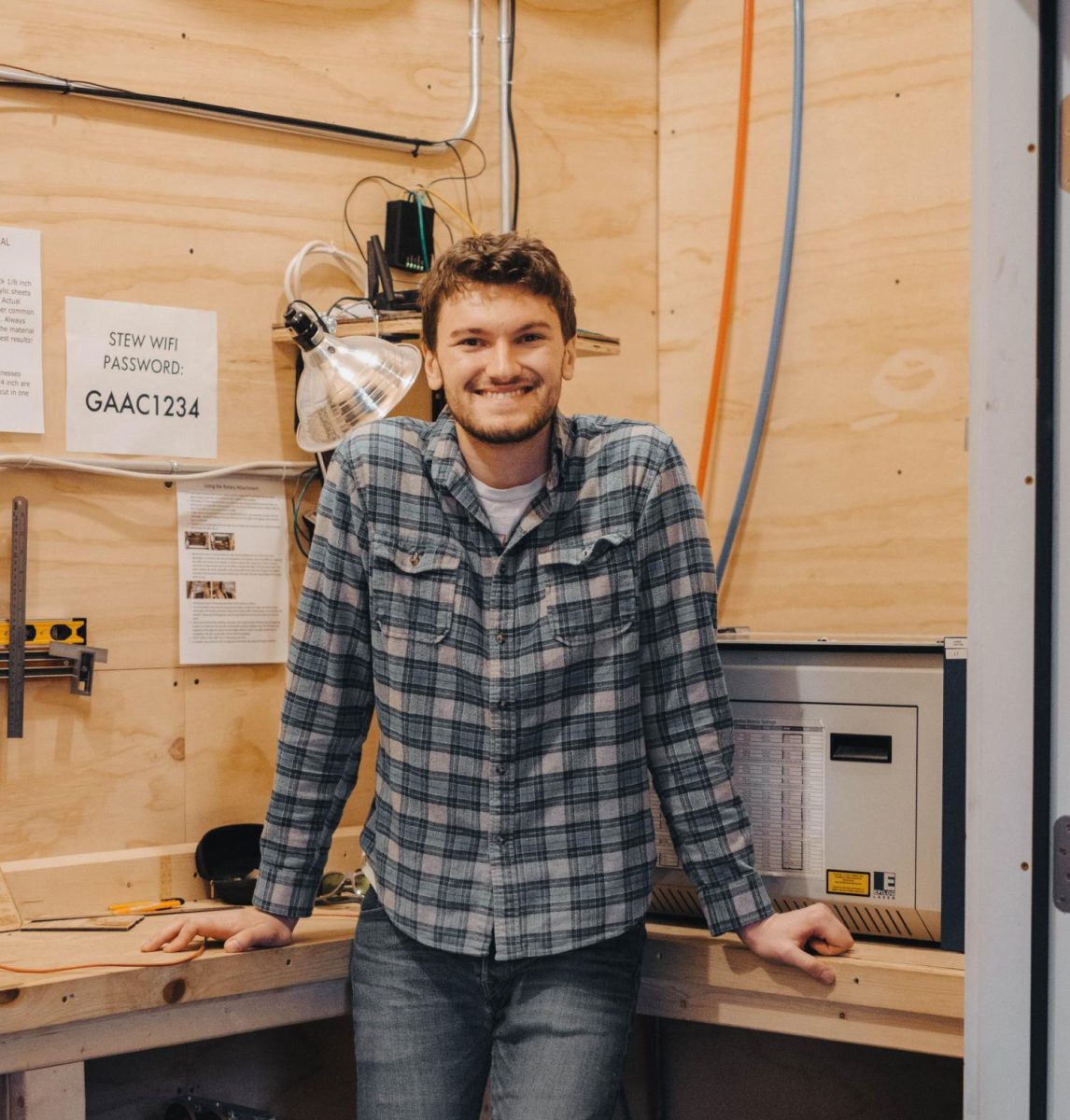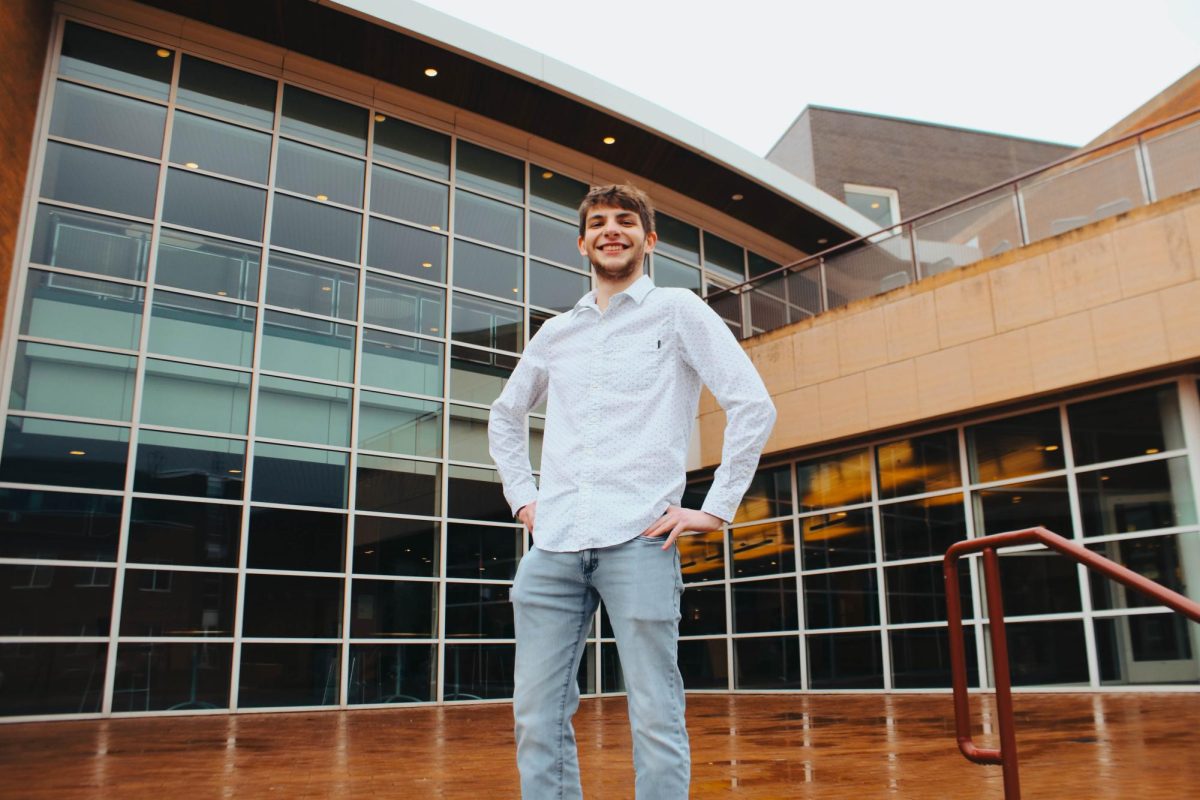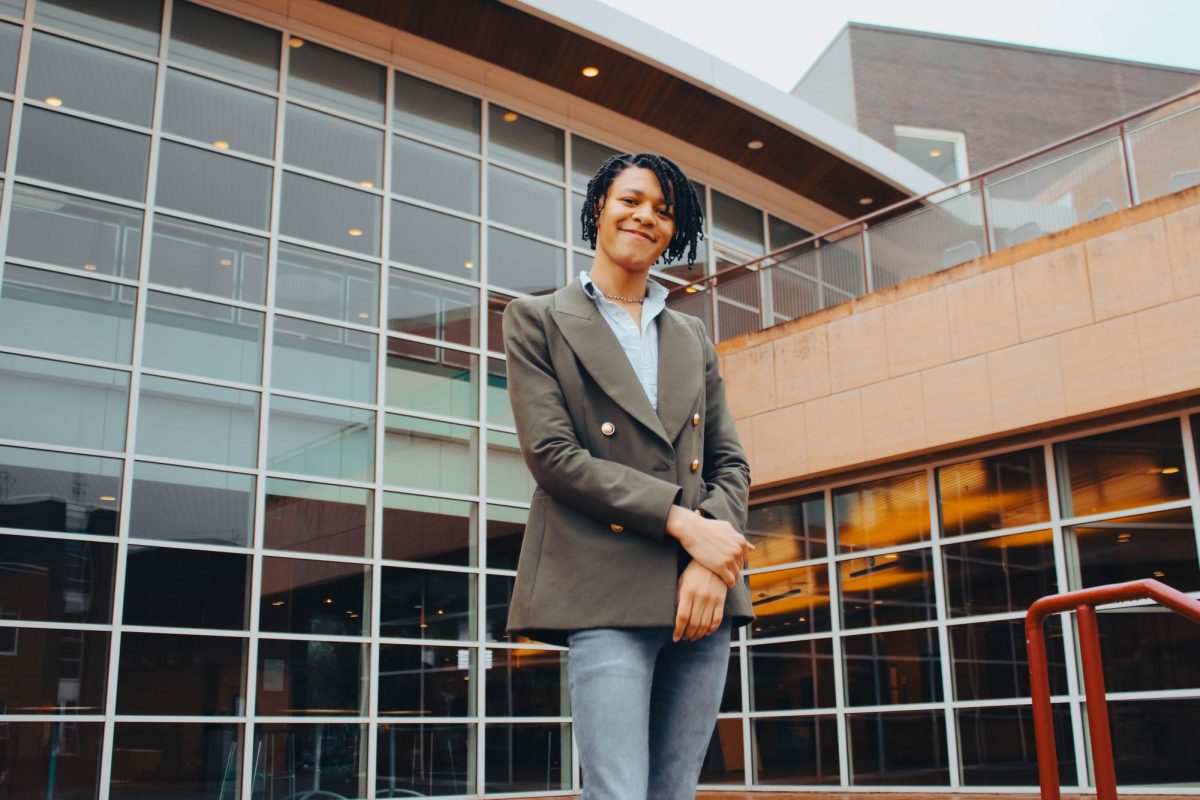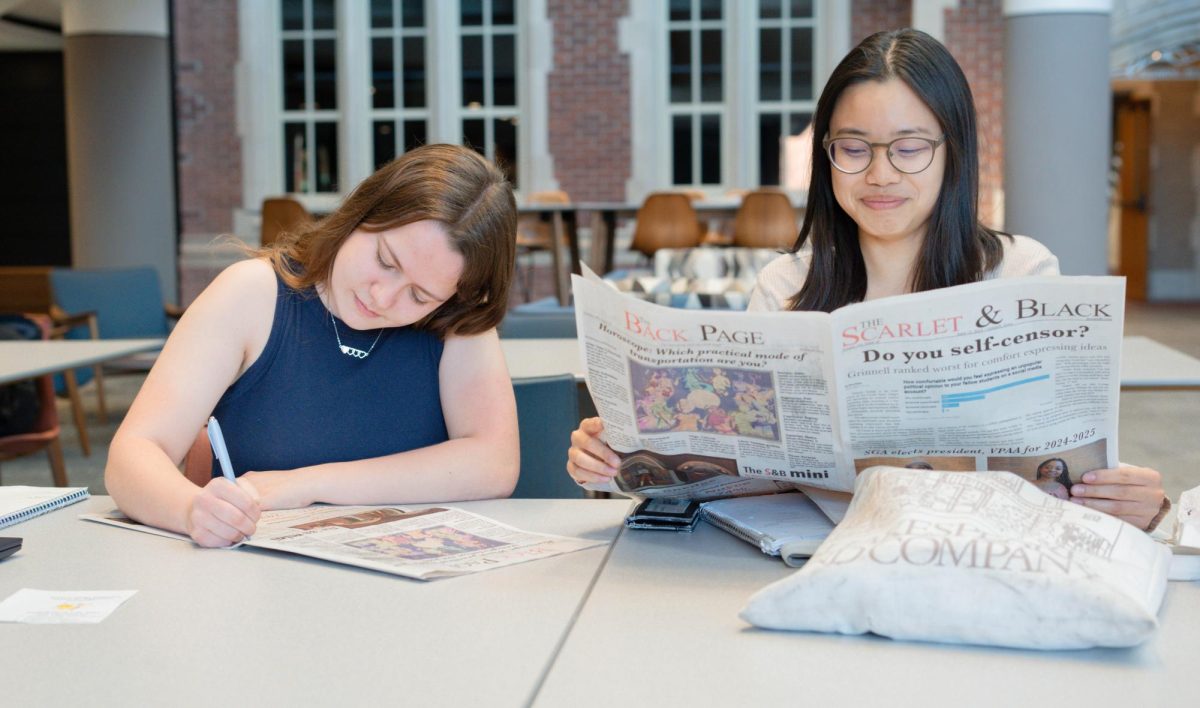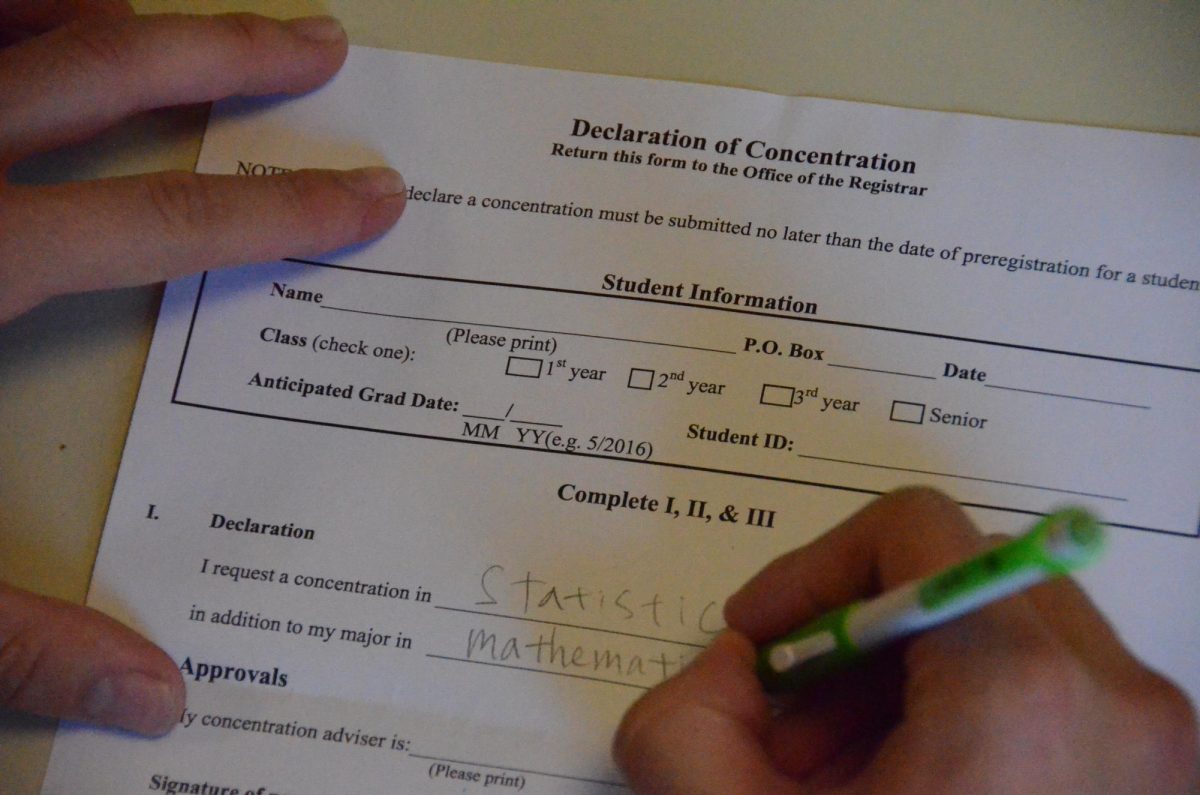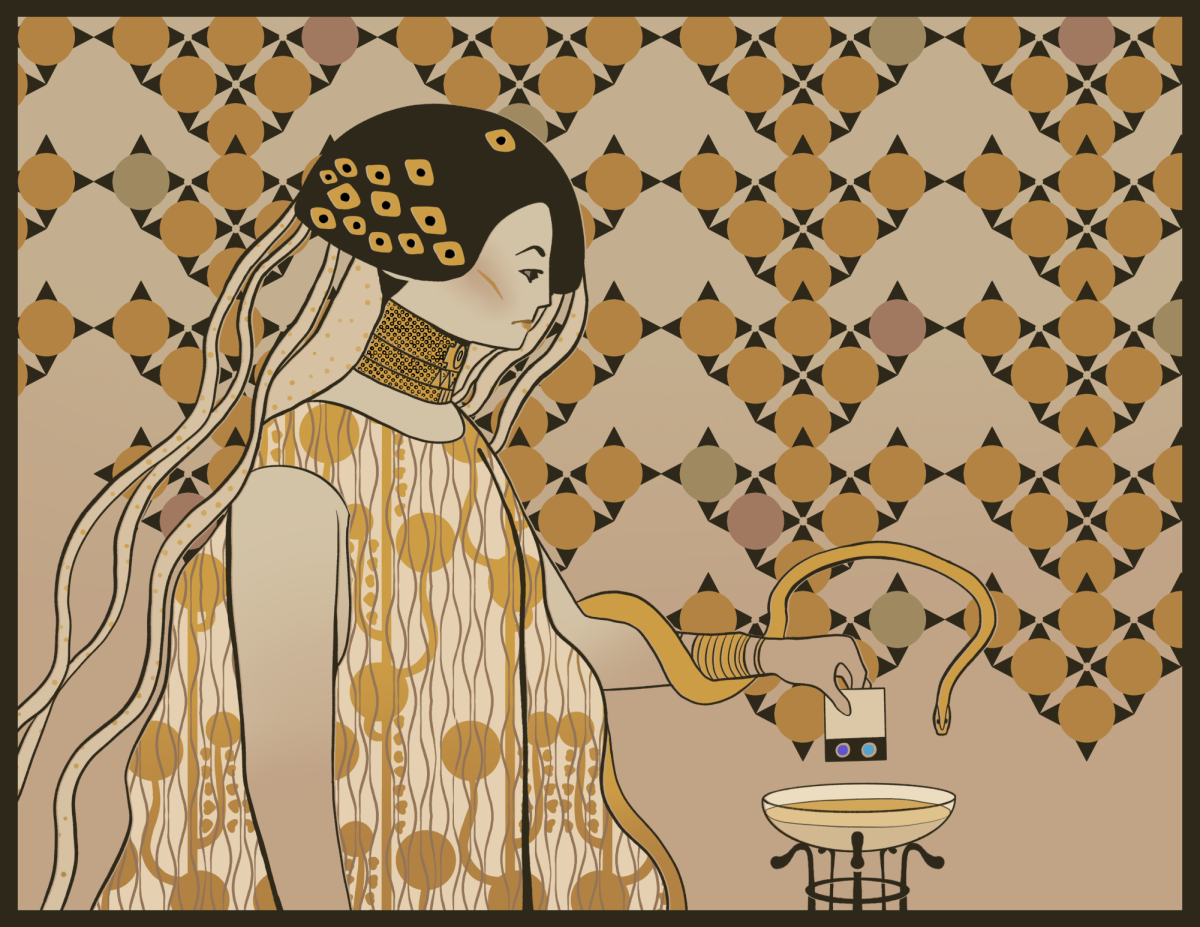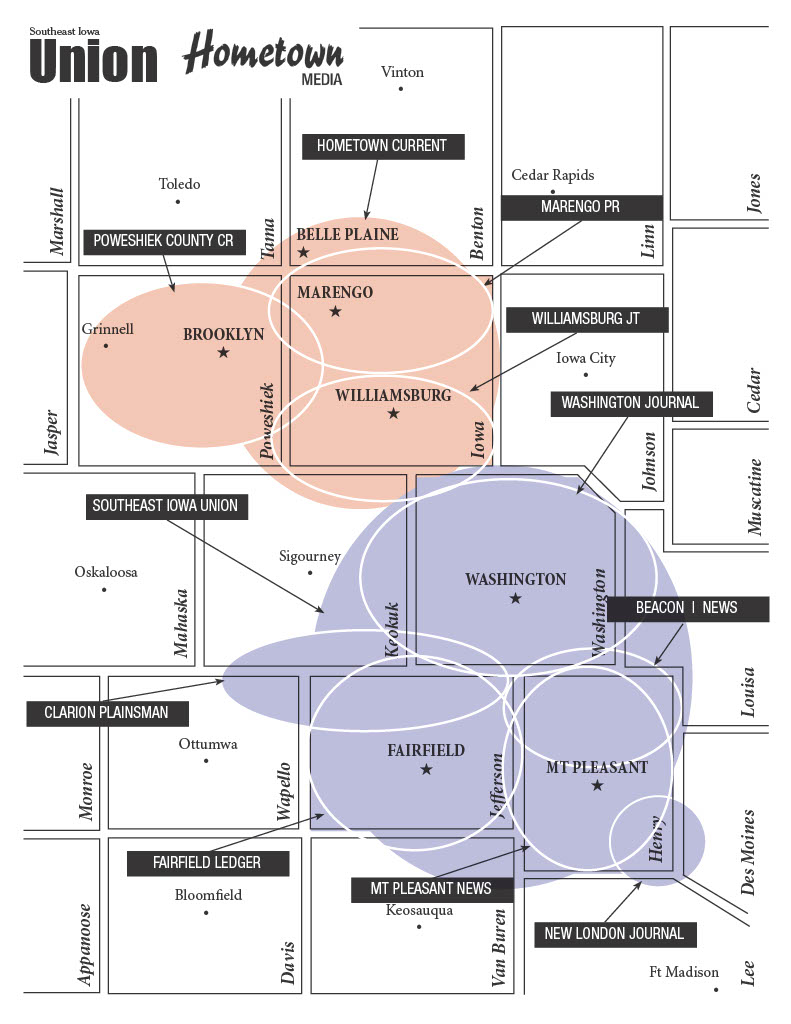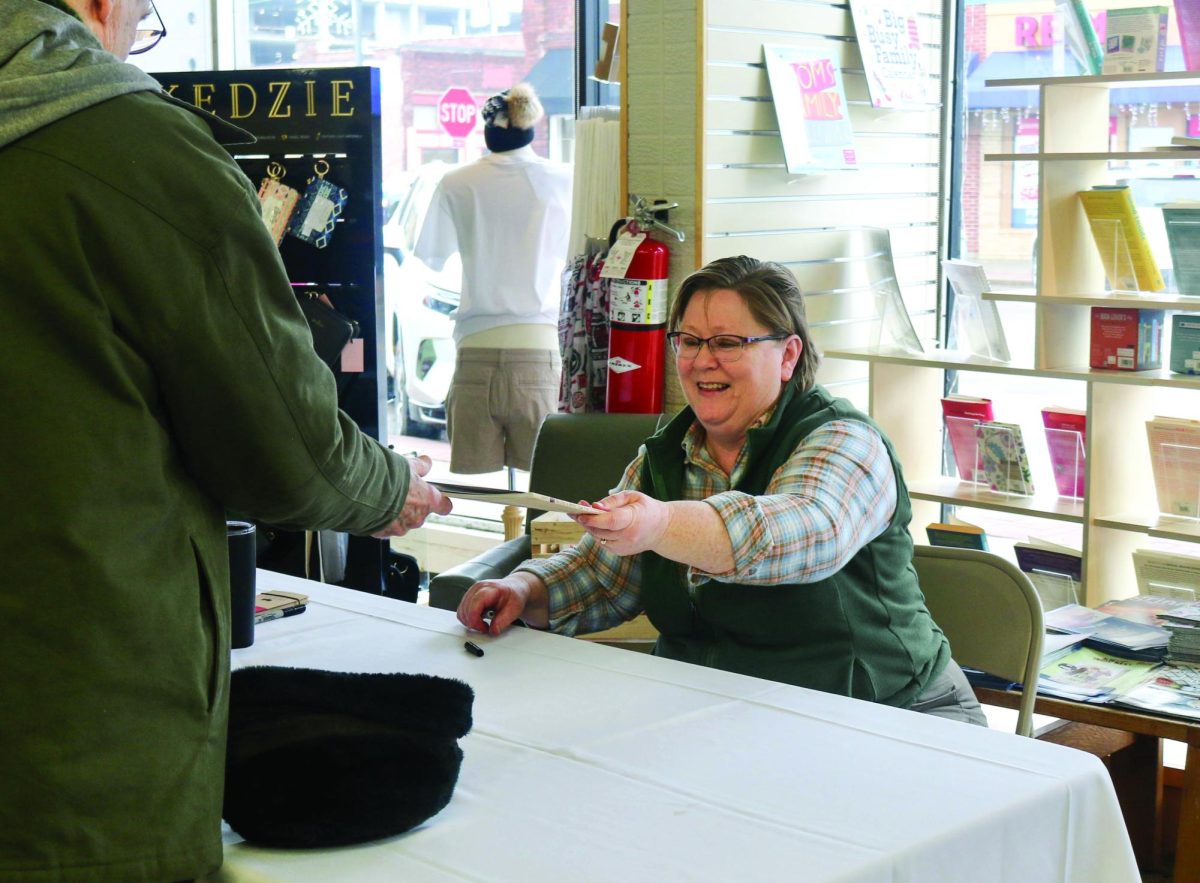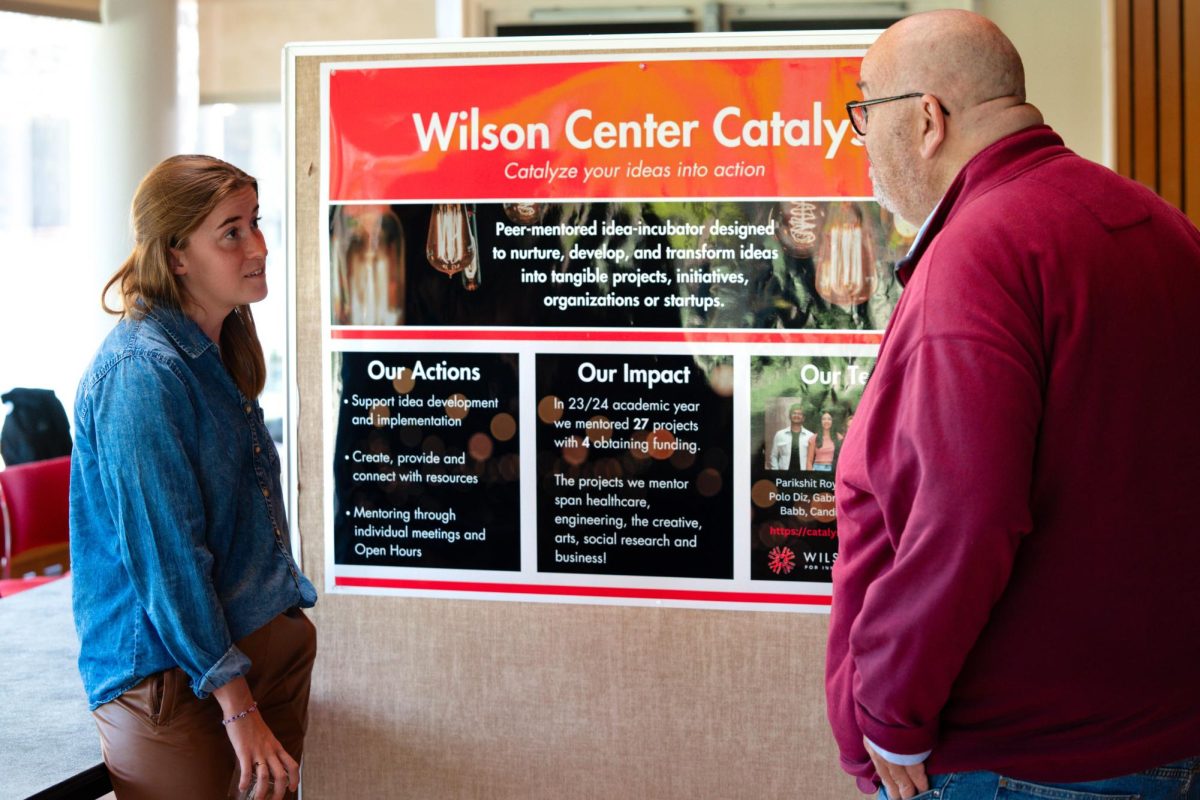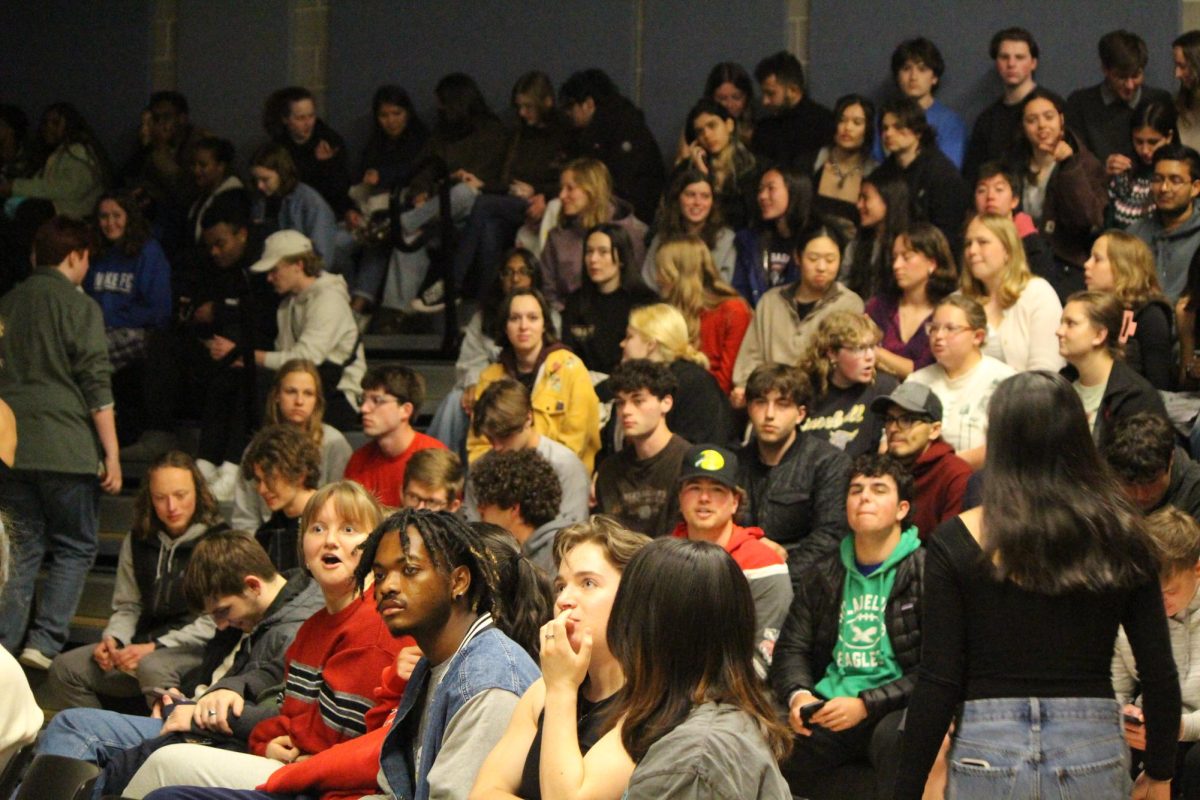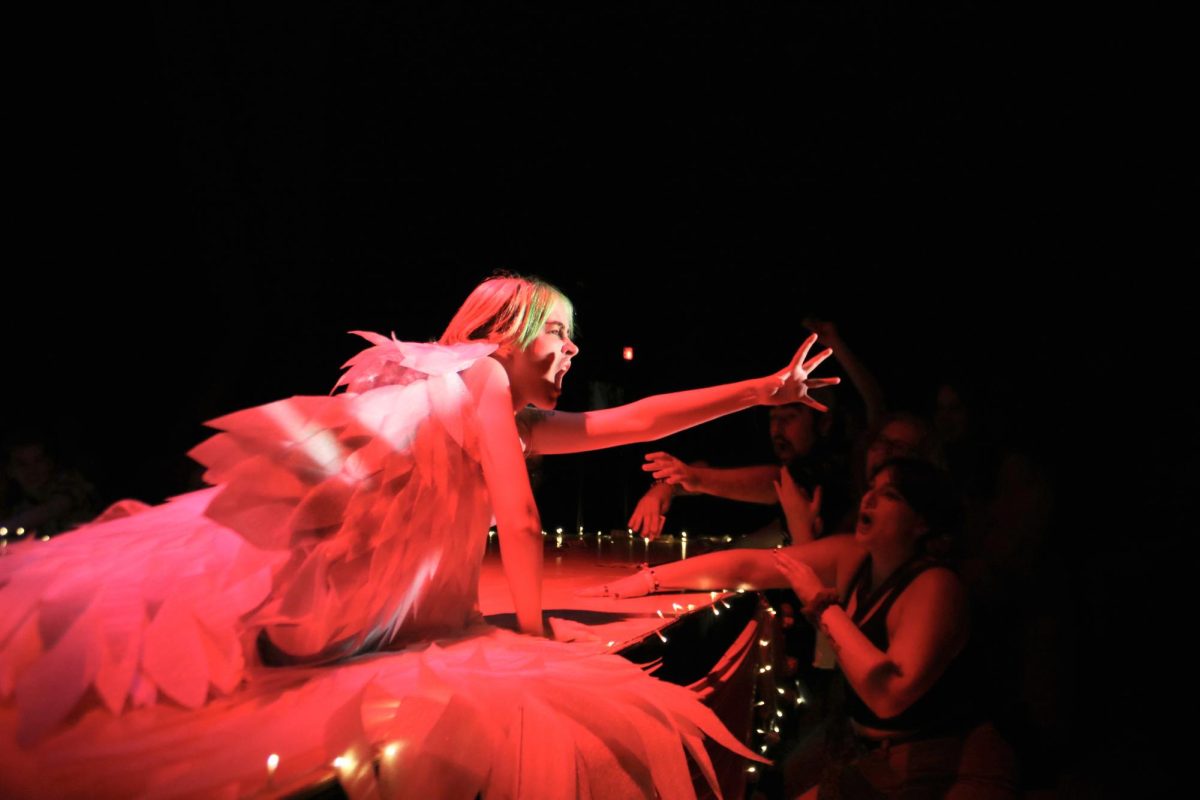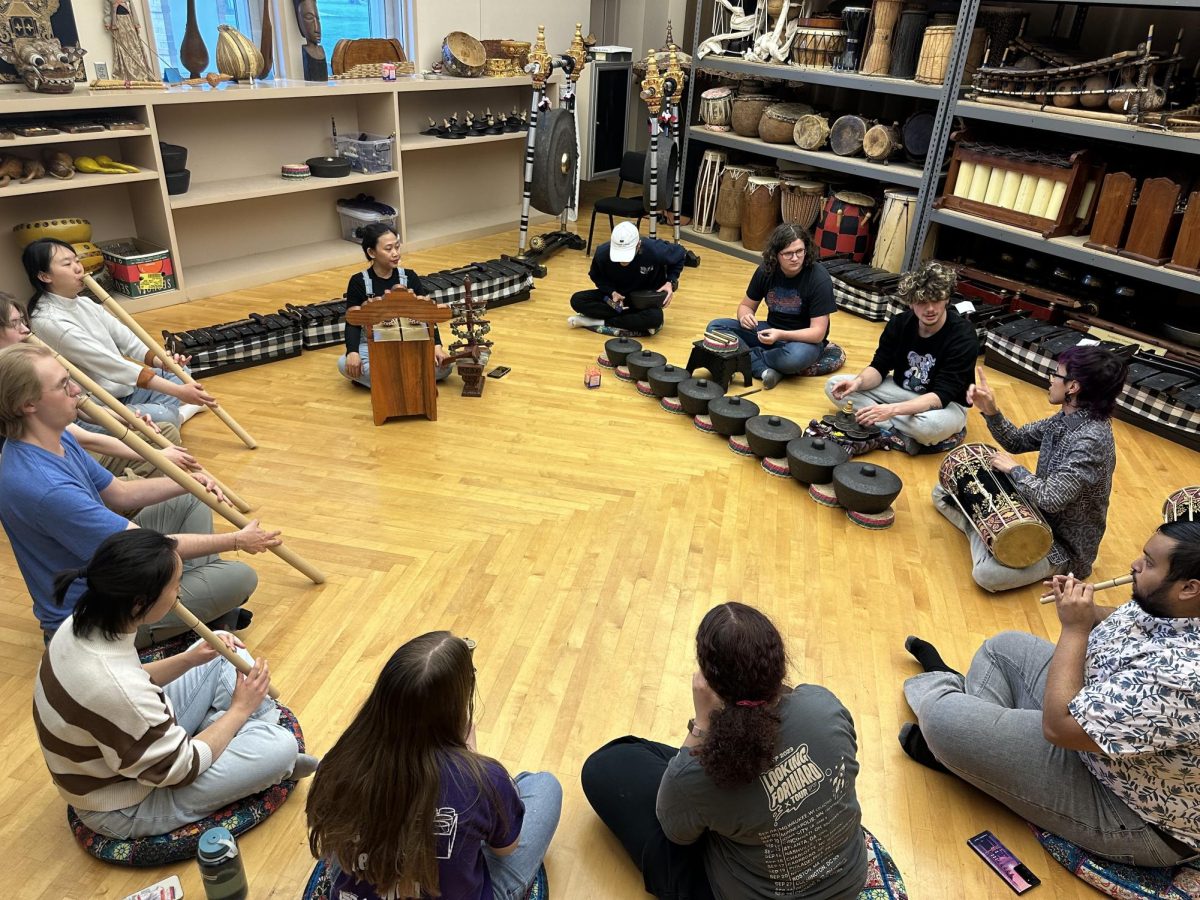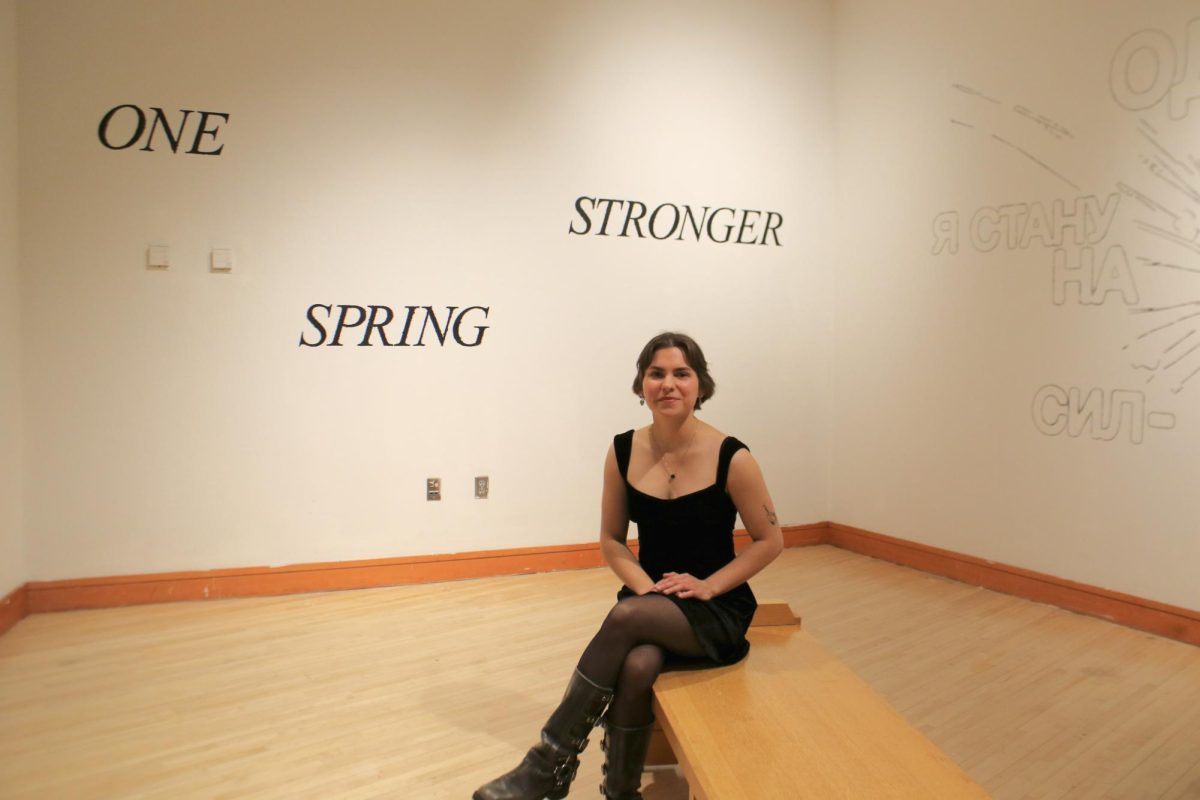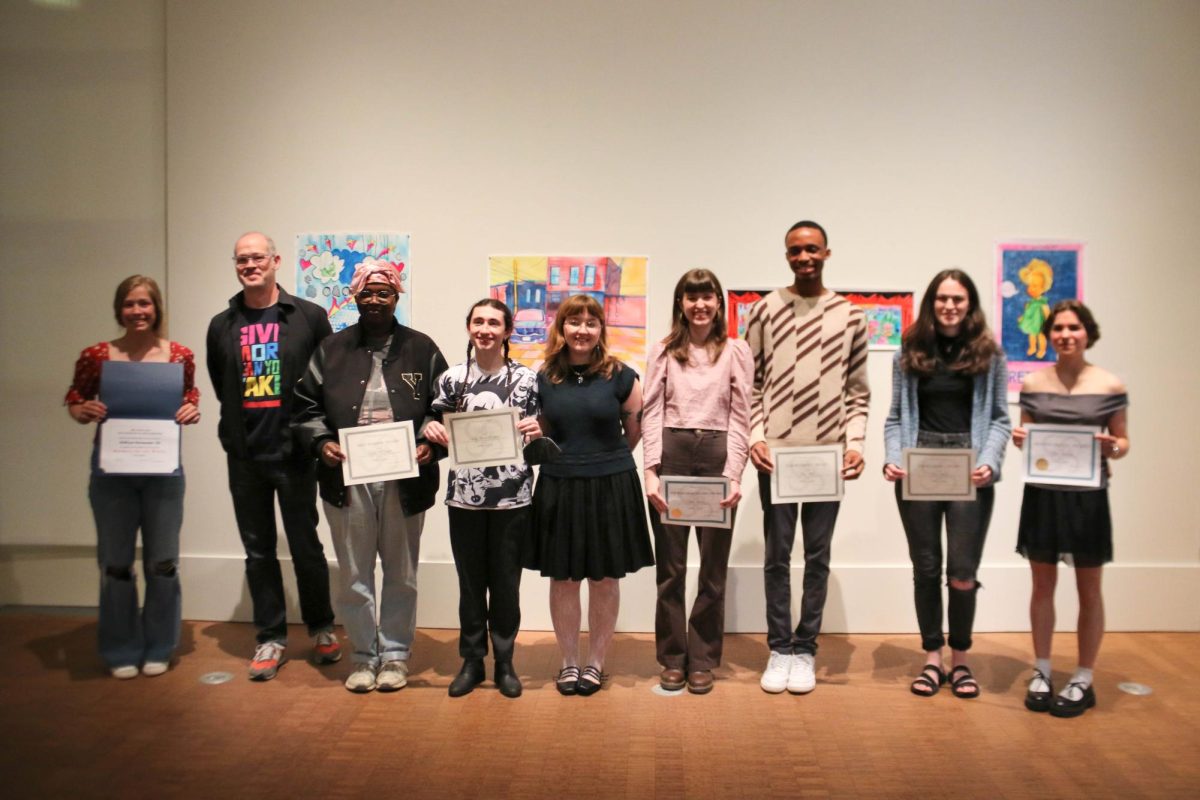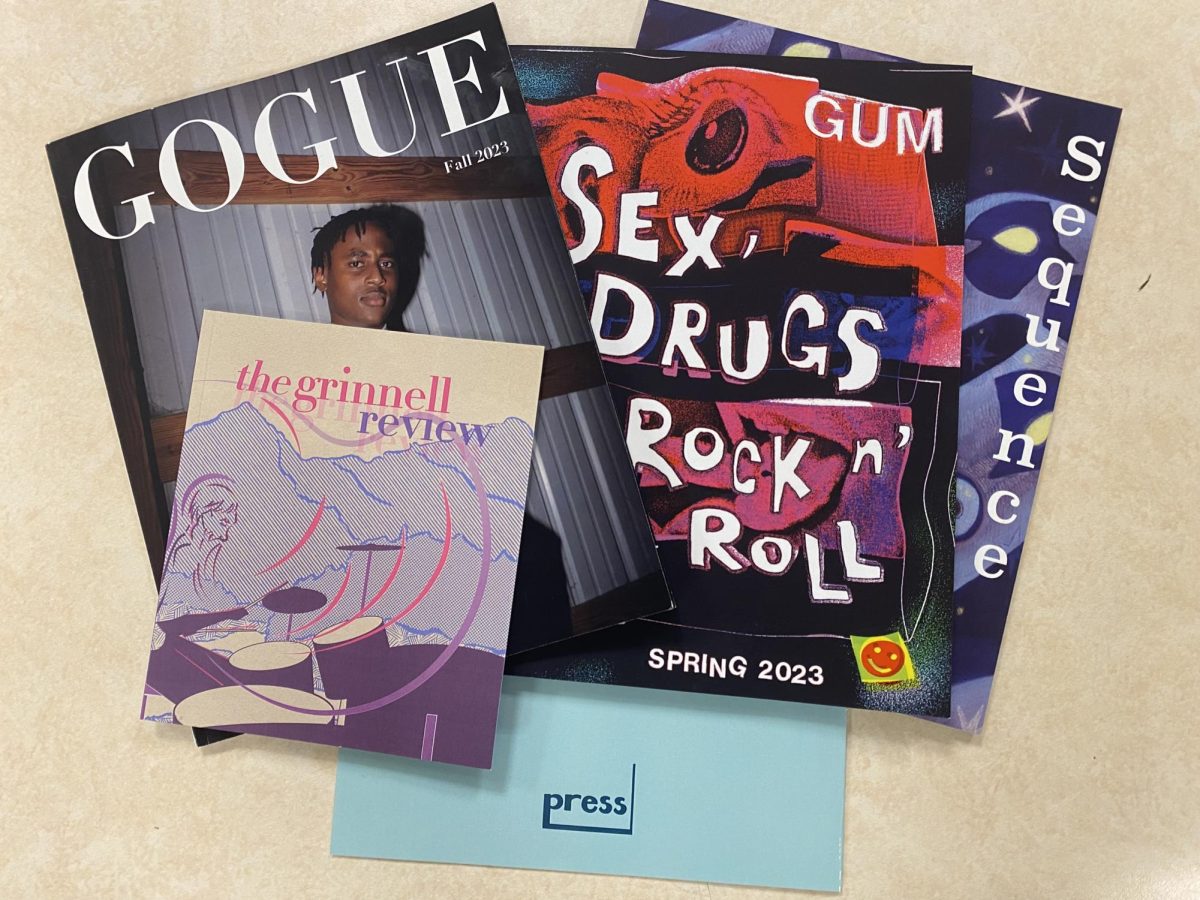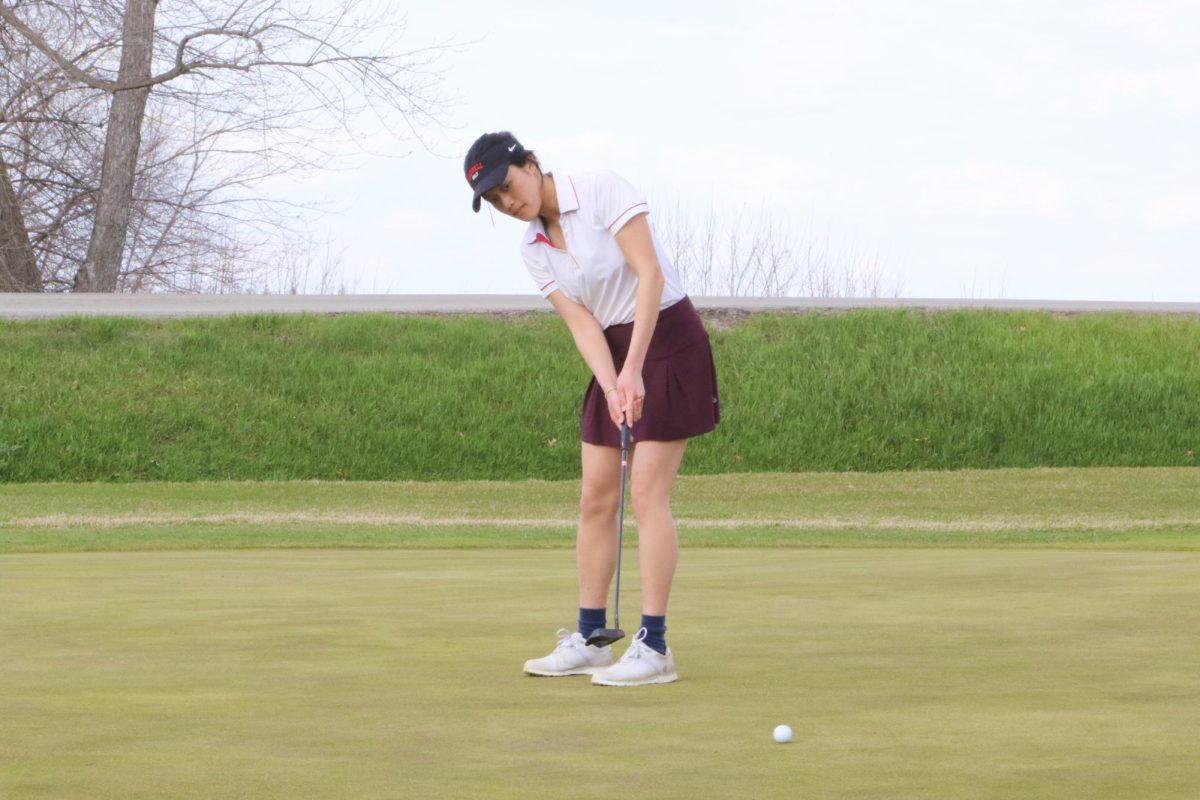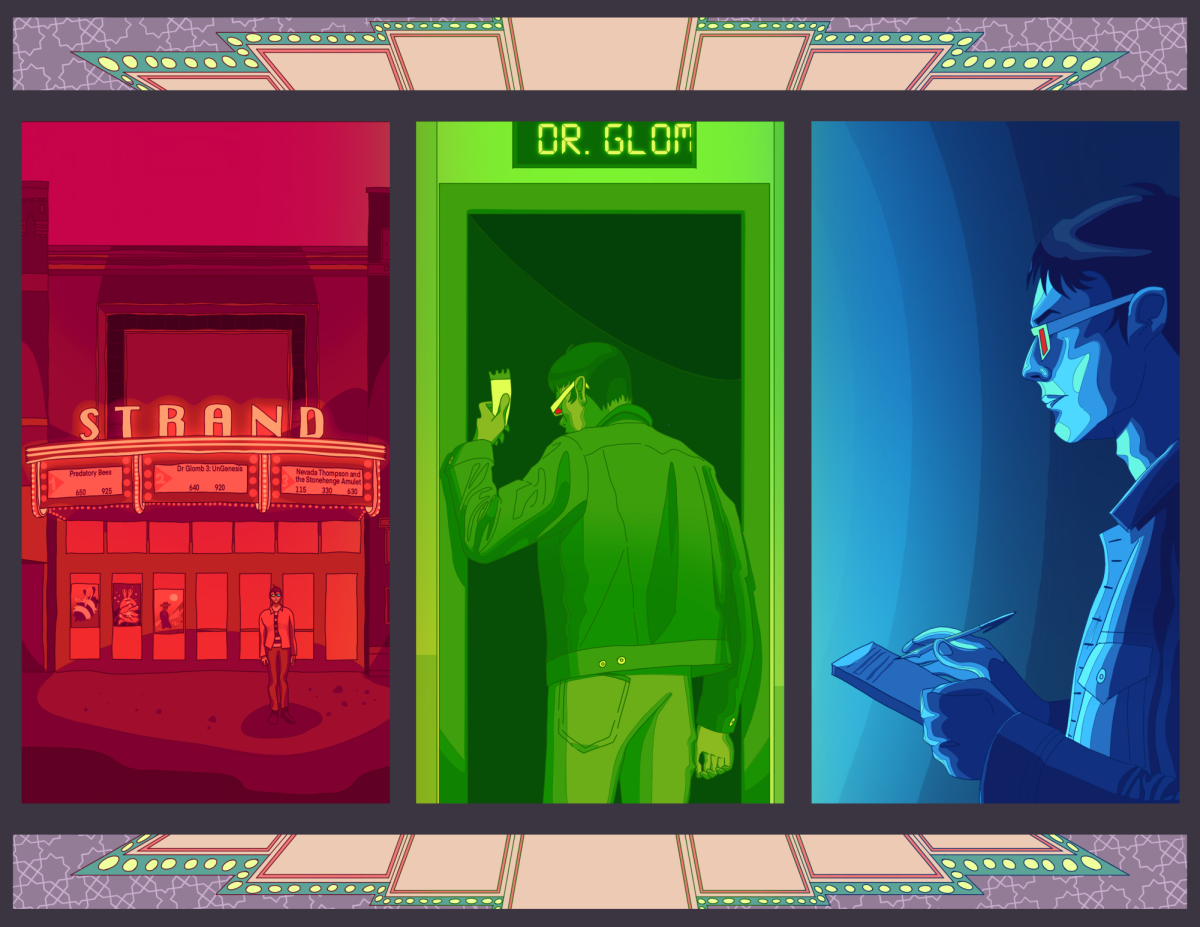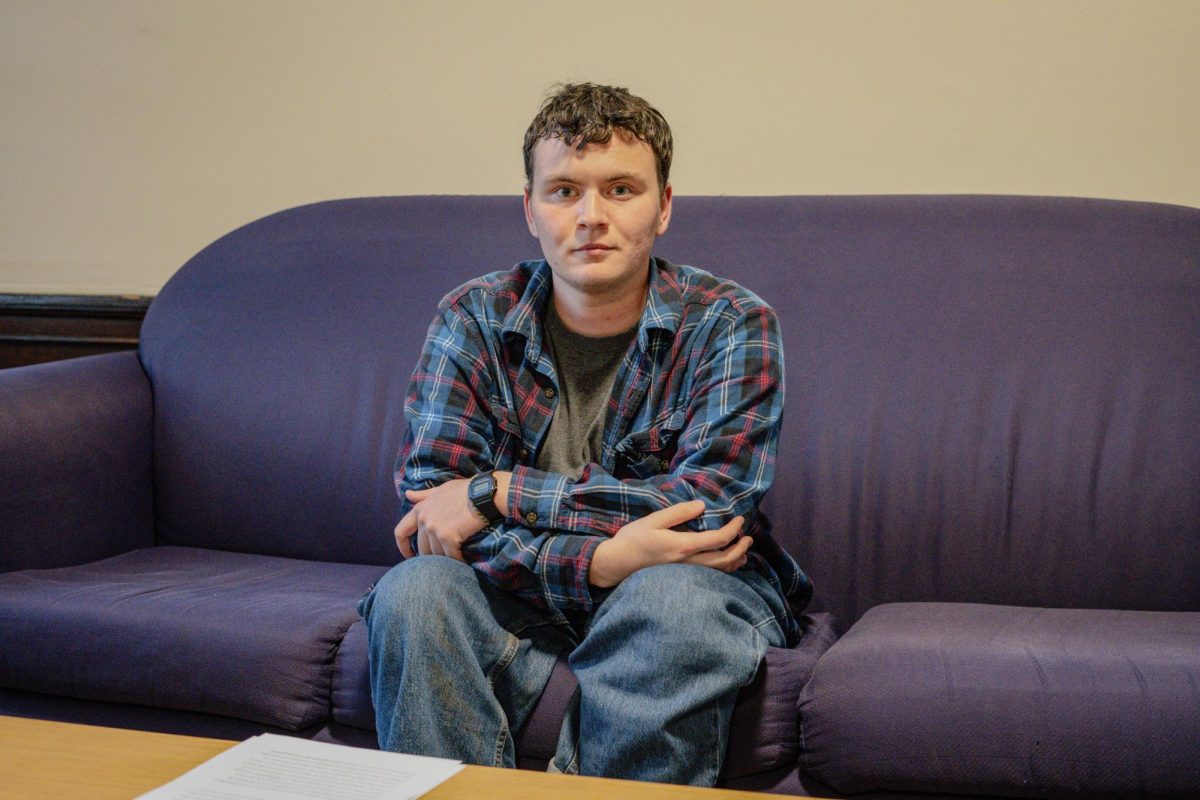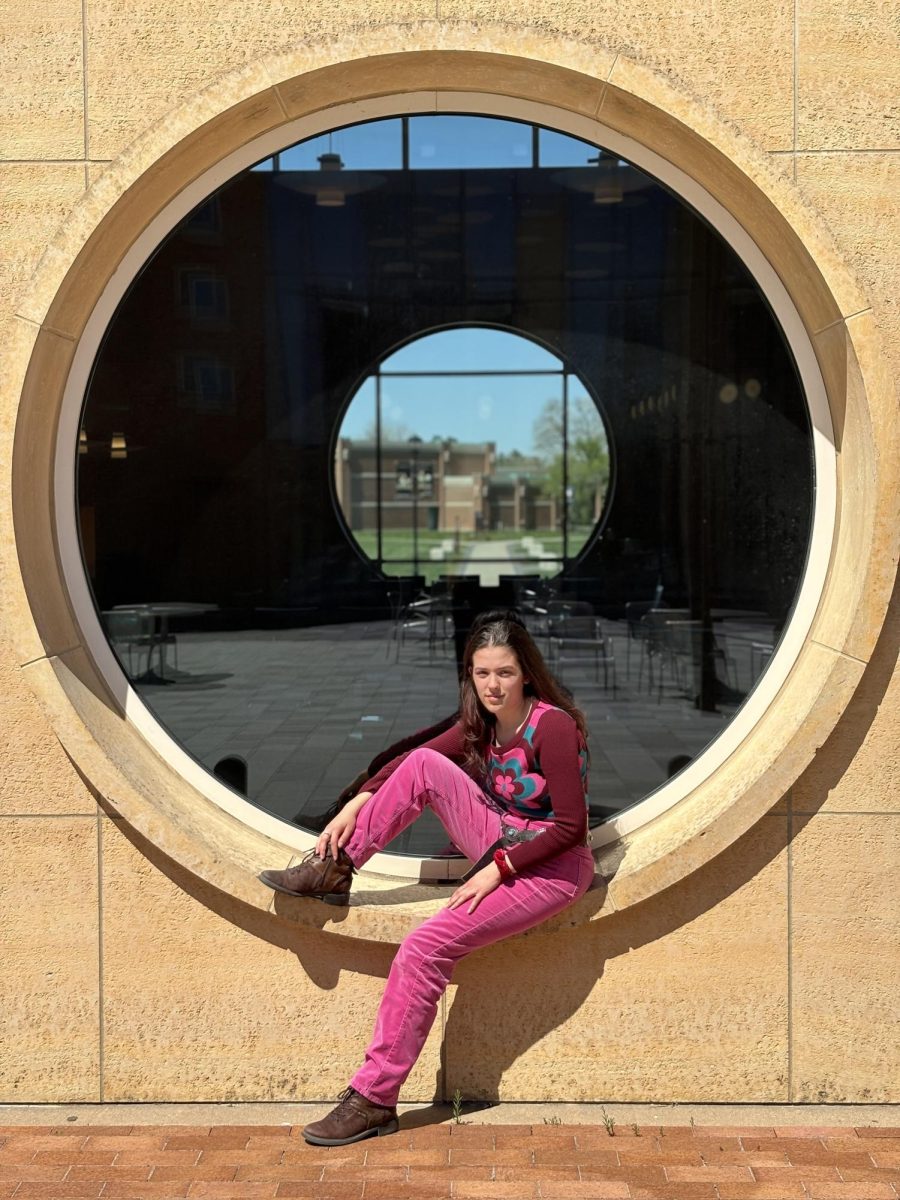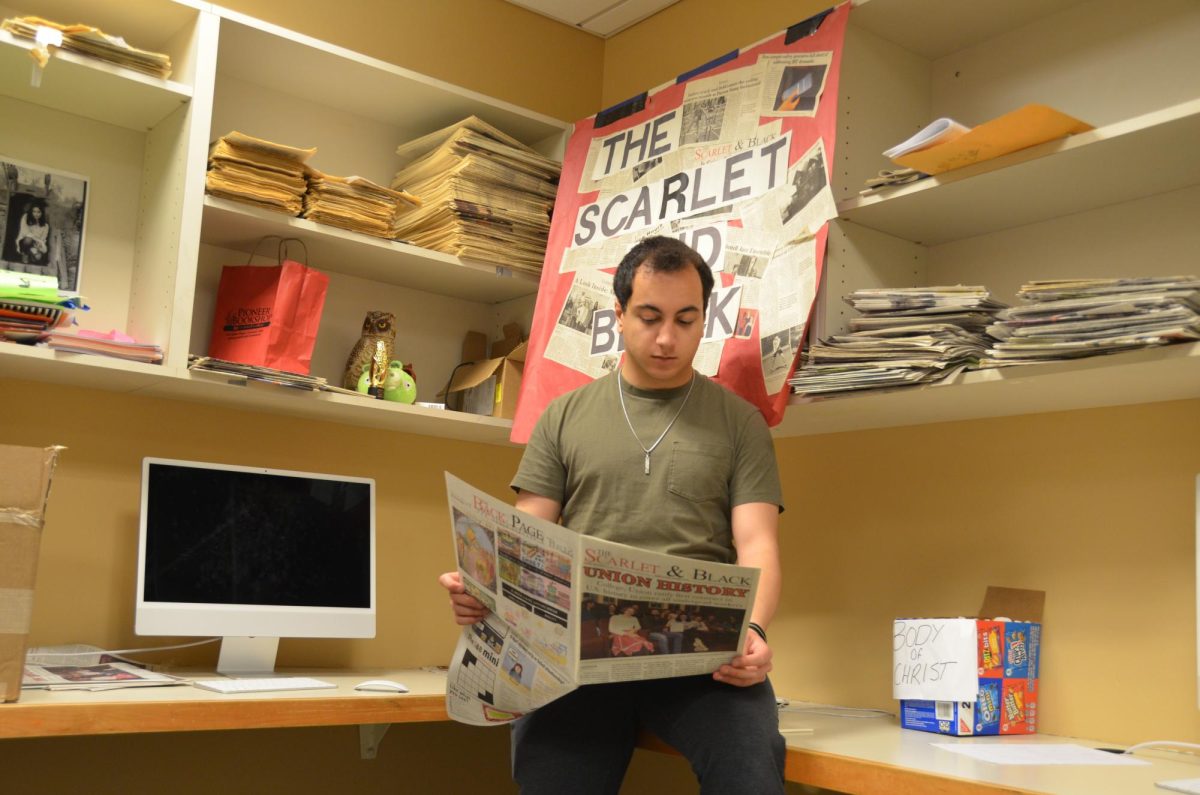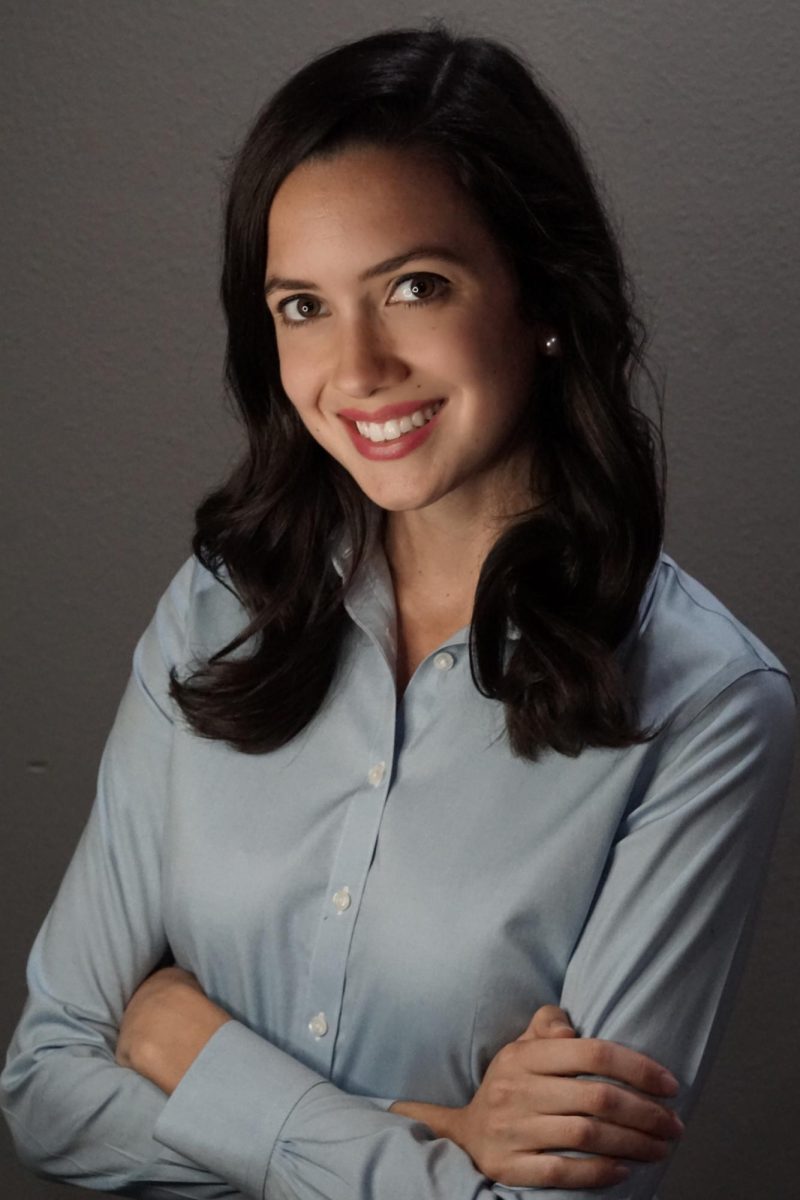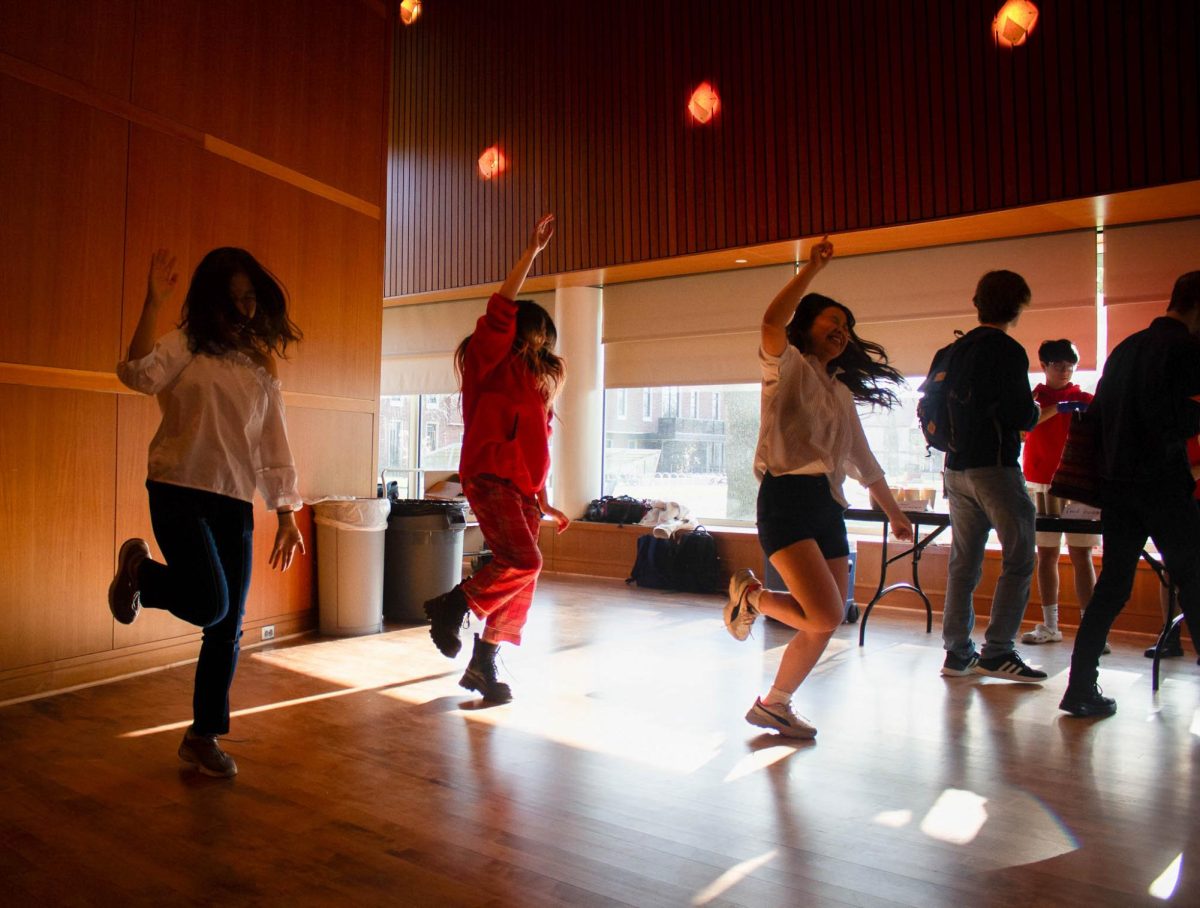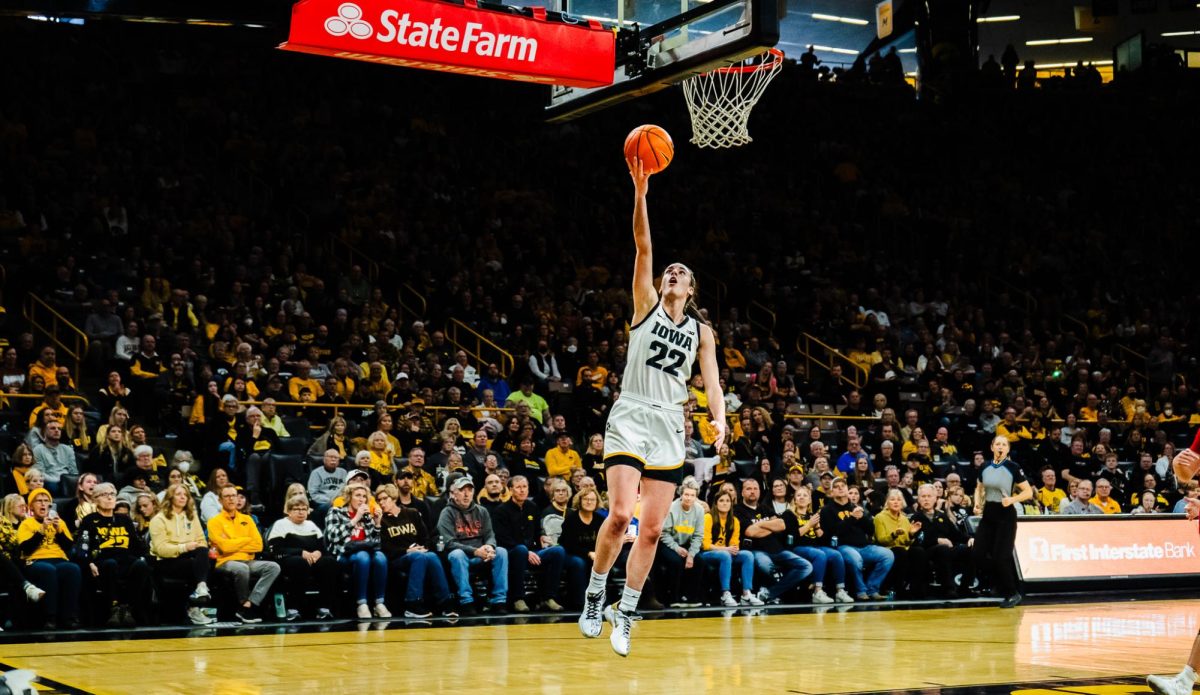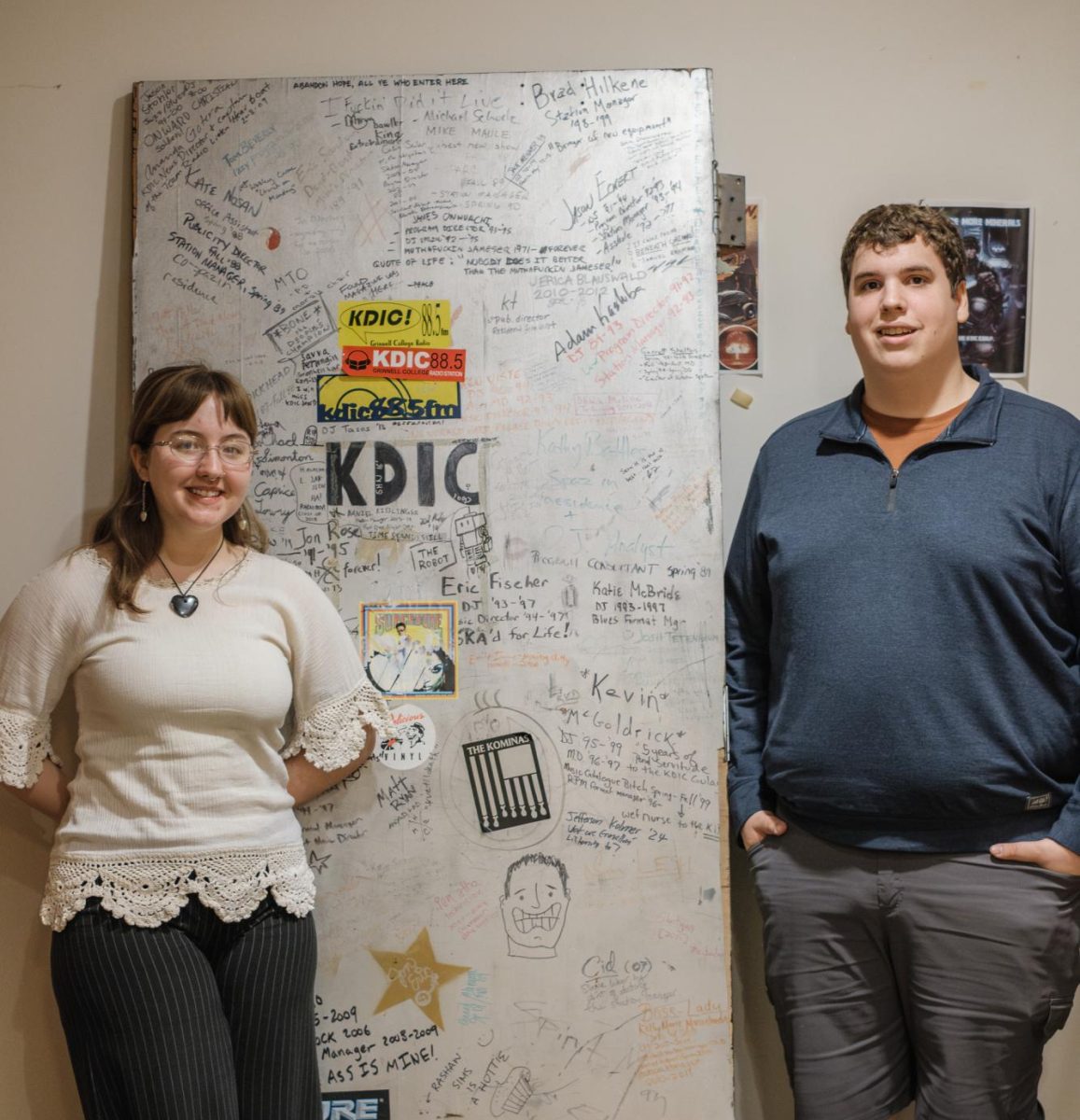By Christopher Squier
squierch@grinnell.edu
This week, the Smith Gallery wraps up an exhibition of intricate and outstanding work by Lauren Marzella Caskey ’13, entitled Meditations: On Line and Reflection. Through small-scale pen and colored pencil pieces, Caskey examines ideas of meditation within the context of the process of art making while hinting at broader subject matter.
Connecting the meditation in making her pieces to Buddhist mandalas, Caskey creates work replete with symmetry and repeated patterns. The process of making marks in a deliberate but thoughtful manner is evident, and the contrasts of black filler pen on white paper starkly exaggerate Caskey’s marks.
Caskey named them meditations to discuss the nine to ten hour process of concentration and relaxation that the pieces involve.
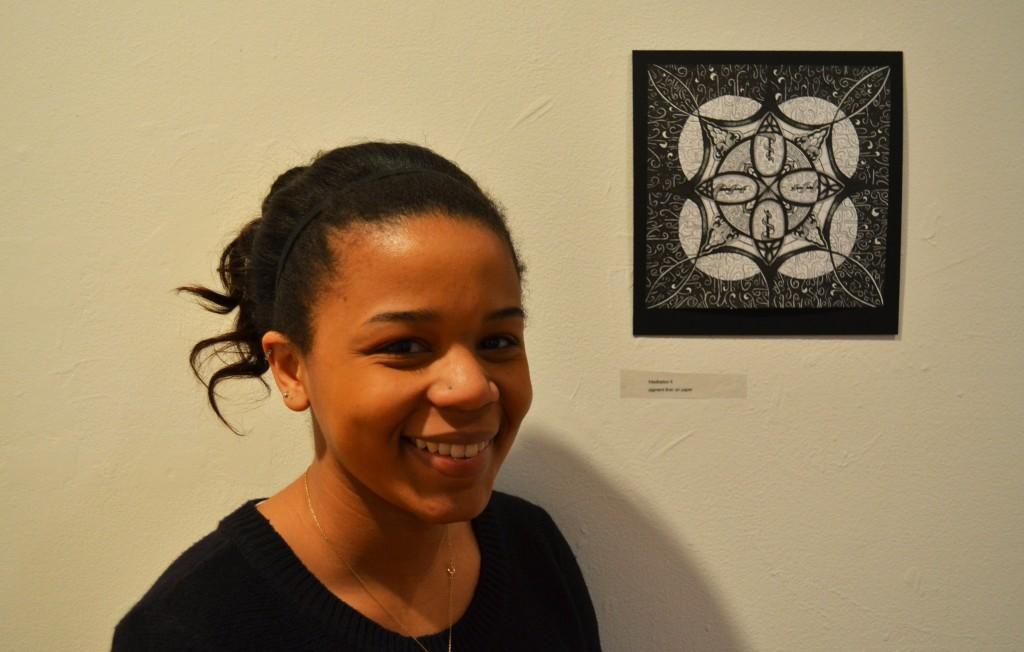
“The act of sitting down and doing them for three or four hours each day reminds me of a meditation, where I can just take a breath and that’s all my mind is focused on,” Caskey said.
Caskey also relates her pieces to kaleidoscopes and henna tattoos.
“In [that] sense, they’re very deliberate and free-flowing and organic,” Caskey said.
To a certain degree, Caskey creates her Meditations intuitively, making decisions about content and form throughout the process of creating them.
“A lot of times, I have this trick where I squint my eyes,” Caskey said. “When I do that, I can see if something’s missing and if something’s blank in one area or too heavy. I can edit as I go along.”
Using a minimal aesthetic, Caskey exhibits her fourteen works around the room in a sparse display, leaving the majority of the wall space empty. Although this draws attention to the imperfections of the wall—overpainted scrapes and nail holes are still visible on the far wall—it also creates a meditative space unobtrusively lit and enclosed within the plainness of the walls.
The lack of information in general in the gallery makes the specific puzzles of detailed information encapsulated in the Meditations even more incredible. Converging in intricate patterns, webs of interlocking line and form cover small sheets of paper, the largest of which are still only about eight inches in each direction.
Presented linearly, with ample space between pieces, the exhibit breathes, making each piece its own experience. Nevertheless, each wall has its own theme differentiating the work from other pieces.
“I like that the walls are thematized and that they all delve into line in a different way,” said Shanna Nichols ’13. “I like that it’s exhaustive in that way.”
While the left and right walls feature black and white works, the far, central wall brings a touch of vibrancy to the room with colored pencil shading. The colored pieces are more organic, reminiscent of the work of feminist artist Judy Chicago.
The third of these colored pieces shows curving, organic forms coming together, warm yellow-oranges wrapping around the image and ruddy, earthy reds creating a glow from within the picture.
“[This piece] is really dynamic,” Nichols said. “It shows a lot of the movement within the piece through different curves.”
The small scale of Caskey’s works lends the show a personal level of intimacy. While they are shown to the public, they also seem like private reflections. They appeal because they provide a space to slow down, study and look closely.
In this way, they teach us to examine the ways patterns change slightly across the picture plane. Small imperfections distort space slightly, and the work seems to shimmer or move slightly as a result.
In certain pieces, a line within a semicircle connotes leafy greenery or vines growing organically out of corners. Circles are seemingly caught mid-spin, halfway through their rotations.
The biological implications of Caskey’s works are also unavoidable, bringing to mind cell structures or crystalline symmetries, microscopic views blown up large.
These connotations are indicative of the broad scope of these works. Although they can be viewed as a variety of different subject matters, the abstract forms and geometries of these Meditations do exactly what Caskey intended for them—they meditate in a personal way on their surroundings, giving those looking at them a chance for introspection and reflection as well.
“Within them, there are a lot of imperfections, and as I work on them, I try to improve them or incorporate them,” Caskey said. “I think that’s very much what meditation is about—when you’re trying to weed out the bad, recognize the good and make them beautiful.”
